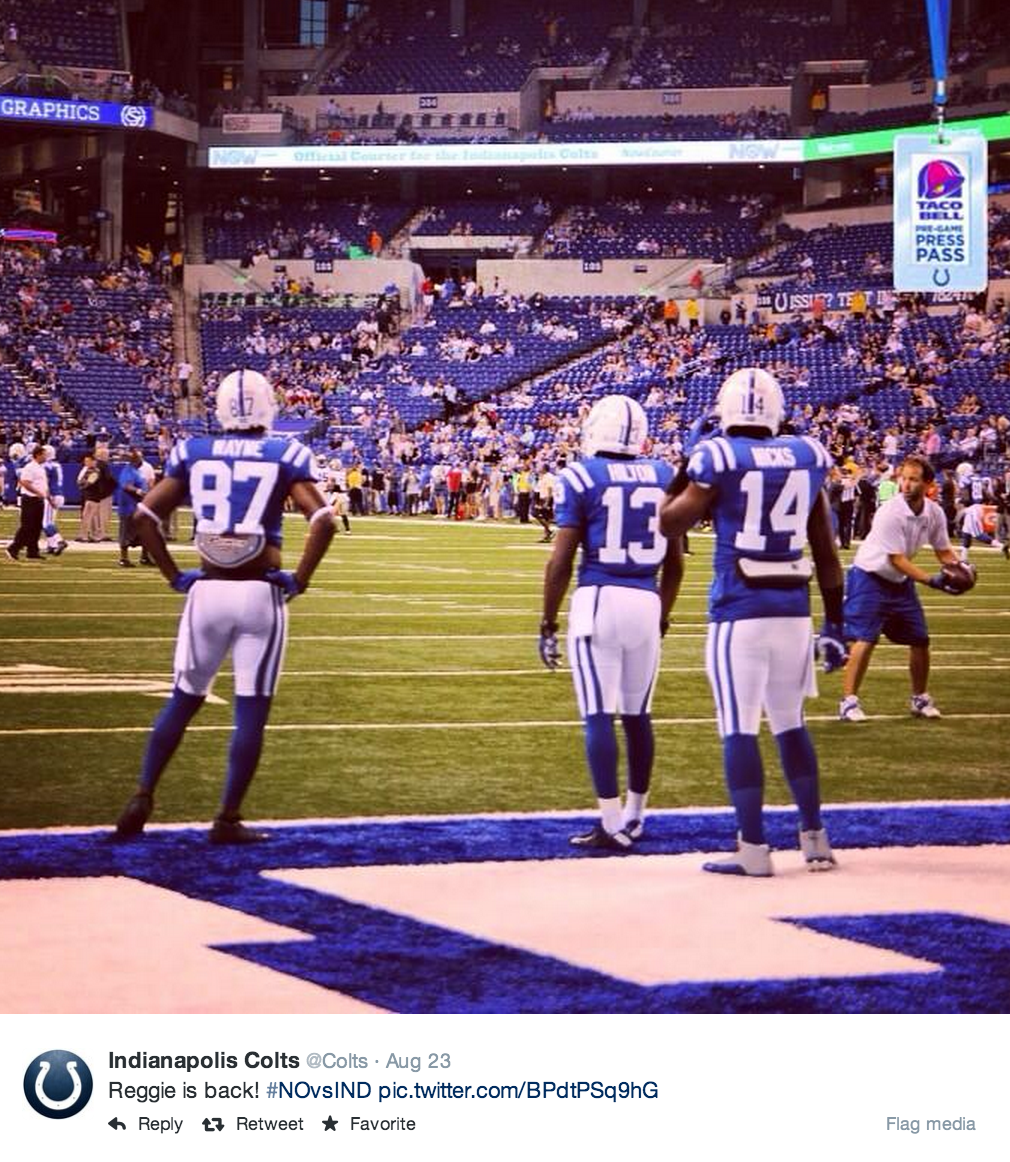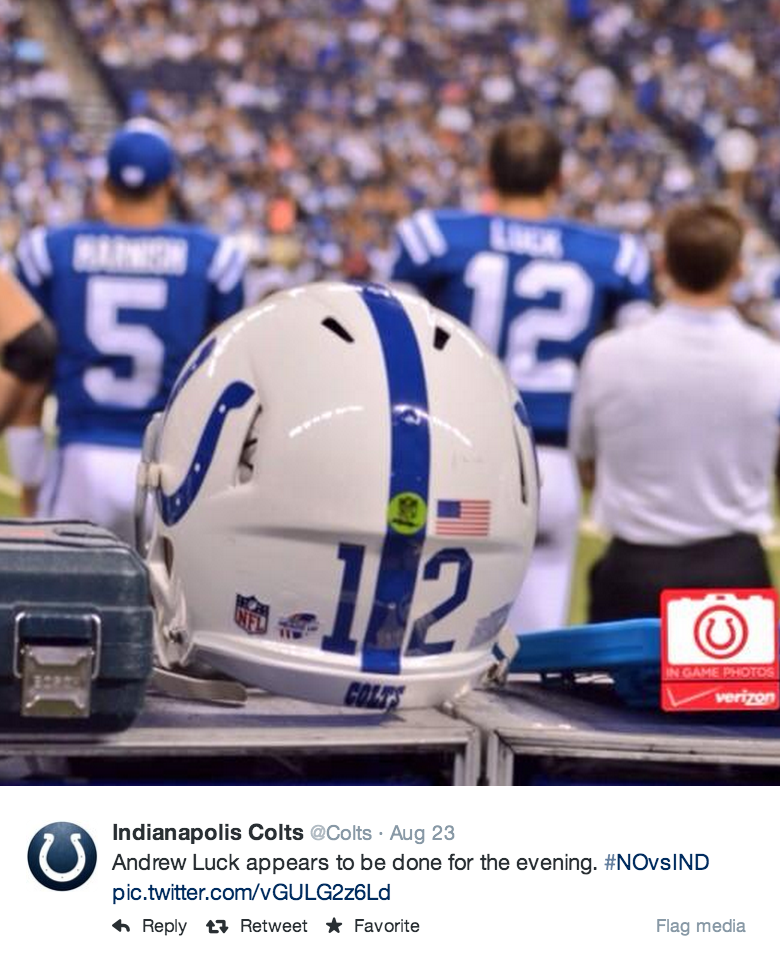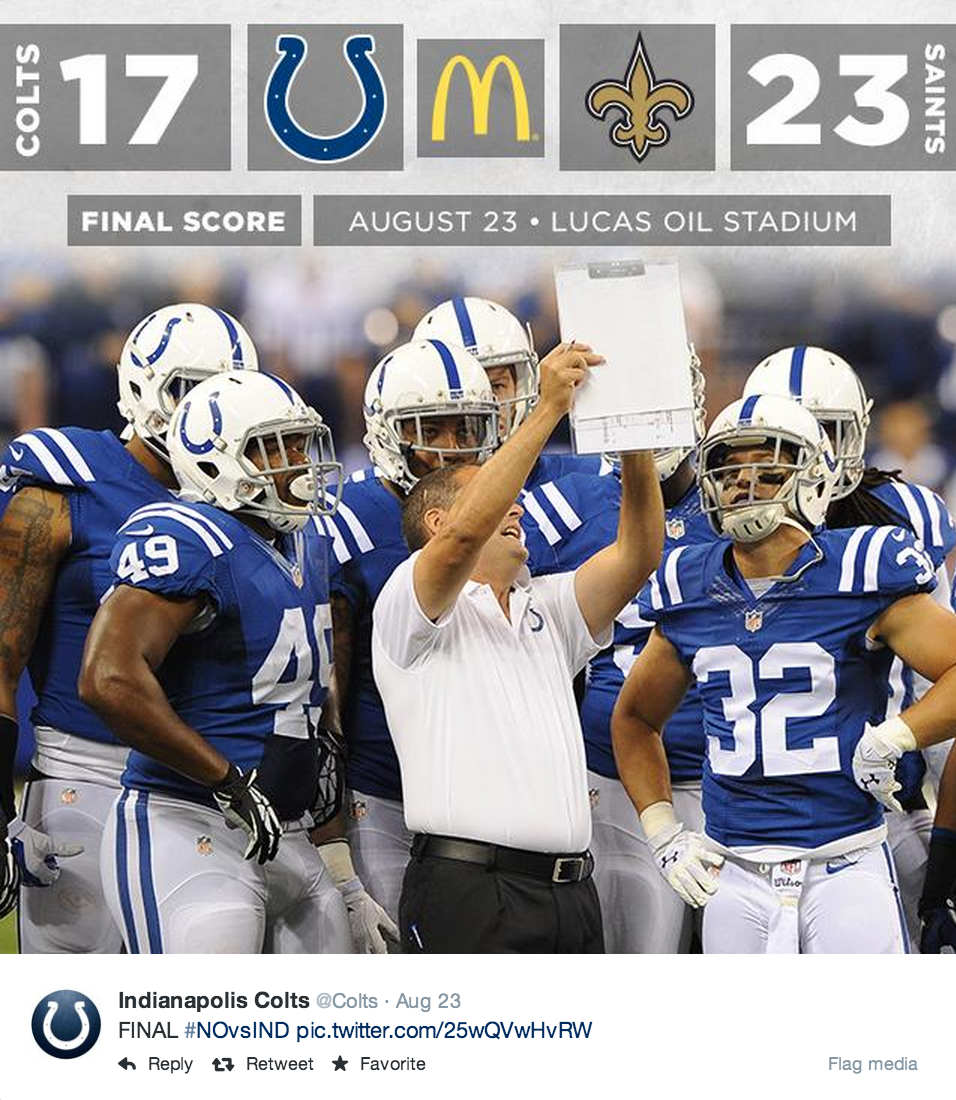I can be tough on sponsored programs. All too often it’s forced or simply screams advertisement (think the “sponsored by” copy you see everywhere), adding noise to the community and little value to the sponsor. But this football season the @Colts have found a formula that actually works. They’ve found a way to integrate sponsorships into their content in seamless fashion. Go ahead and take a look:
The Colts have created mini series of sponsored content. The series range from behind-the-scenes sideline photos (sponsored by Taco Bell) to score updates (sponsored by McDonalds). The idea of sponsored content in the form of simple graphics makes a lot of sense. I have a feeling it’s something we will see more of from teams and leagues in the next year to come.
And, here’s the good news: For any team that is looking to monetize their social media efforts, this is an easy concept to replicate. If you decide to create a sponsored content series, take these three pointers from the @Colts initiative:
No. 1: Take a content-first approach.
The Colts didn’t create new content just so they could slap a sponsor to it. Instead, they have integrated their sponsorships with content they would produce anyway (like score updates and behind-the-scenes photos) because it is valuable to their fans. This is a win-win for the sponsor and fans: It doesn’t add noise to fans’ timelines and it has worth to the sponsor because fans want to pay attention to the content.
No. 2: Make the tie-in organic, not forced.
When I first saw the behind-the-scenes content sponsored by Taco Bell, I actually thought that the pass was a credential that just got caught in the photo. It wasn’t until I looked closer that I realized it was a sponsor tie-in. This is key.
The @Colts took the time to think about how they could seamlessly integrate Taco Bell into their behind-the-scenes photos. Instead of stamping the Taco Bell logo on the pictures (that would have been the easy way) they thought just a little bit outside the box and created a Taco Bell press pass to feature on every photo that’s noticeable, but not a distraction.
Because your fans are going to be seeing this sponsor tie-in over and over again throughout the season, you don’t want the integration to scream “advertisement”. Eventually, they are just going to tune it out. Take the time to think a little creatively and see if there’s something more you can do than simply stamping a logo on it.
No. 3: Don’t abuse it.
From what I can tell, the @Colts have three sponsors that are tied to content series, which seems like a decent balance (anymore and it might be too much). The key is finding a balance between what is sponsored and what is not. If you want to replicate the program, pick one to three series that can creatively be turned into sponsored content and stick with it. Remember, not every piece of content needs to be sponsored. In fact, it shouldn’t be. The last thing you want is your fans to feel like the account is a tweeting billboard.
So, what do you think about sponsored content series like this? What tips do you have for others who want to create a similar program? Share your thoughts and tips below!
0


I think the content-first approach is the most underrated and ignored part of sports marketing or digital anything. Fans seek your content for team news. Just like a newspaper, that news can make money from ads or sponsorships. Keep it simple and don’t overdo it. Great article!
-Aaron
@ae_westendorf
Completely agree, Aaron. I think the content-first approach makes it a win – win for the fan and the sponsor. Glad you enjoyed the post. Thanks for reading!
– Jess
Reblogged this on Modern-Day Cicero and commented:
Great post about sponsored content
Thanks for the reblog, Nick!